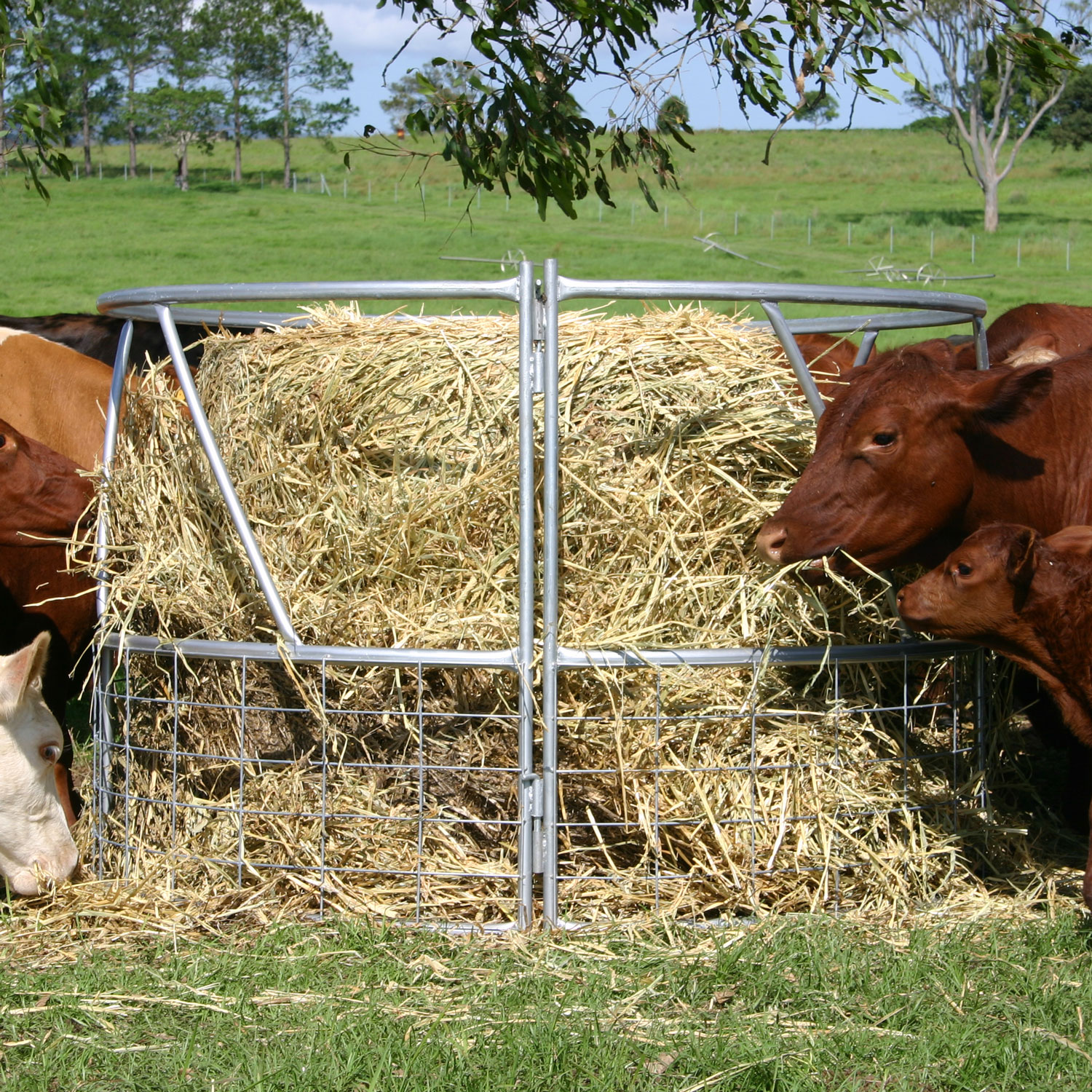


Hay Sleigh ($425* Smith Iron Works Inc., St. Hayhut ($650* Hayhuts LLS, Deleon Spring, FL) Covered Cradle ($3,200* SM Iron Inc., Sanborn, MN) Cone ($1,195* Weldy Enterprises, Wakarusa, IN model R7C) Cinch Net ($147* Cinch Chix LLC, North Branch, MN) Nine round bale feeders, specifically manufactured and marketed to the horse industry, were tested, including (see above): Prior to storage, each round bale was individually weighed and analyzed. In June of 2010, 50 round bales were baled from a pure stand of orchard grass and were stored until fed. The objectives of this research were to determine hay waste, hay intake, horse weight change and economics of nine round-bale feeders and a no-feeder control during horse feeding. However, little research has been done to characterize hay waste resulting from different round bale feeders when used in horse feeding. Several types of round bale feeders for use during horse feeding exist and claim to reduce or eliminate hay waste.

When fed to beef cattle, different round-bale feeder designs resulted in different amounts of wasted ha圓. Hay waste was found to be higher for horses fed costal bermudgrass and alfalfa round bales without a feeder (38% and 31%, respectively) compared to utilizing a ring feeder (2% and 9%, respectively)1. Dry matter storage losses of round bales can range from 2-40%, depending on type of forage, storage method, environment and storage length2. Waste from large round bales can occur during both storage and feeding. However, some horse owners report excessive hay waste and horse weight gain from horses feeding on round bales. The lower price coupled with the convenience of feeding are likely factors horse owners consider when feeding round bales. The cost of hay fed in a round bale package is typically lower on a per ton basis than small square bales. Round-bales are used throughout the horse industry as a means of providing forage to horses housed in poor pastures, dry lots, or during winter months1.


 0 kommentar(er)
0 kommentar(er)
